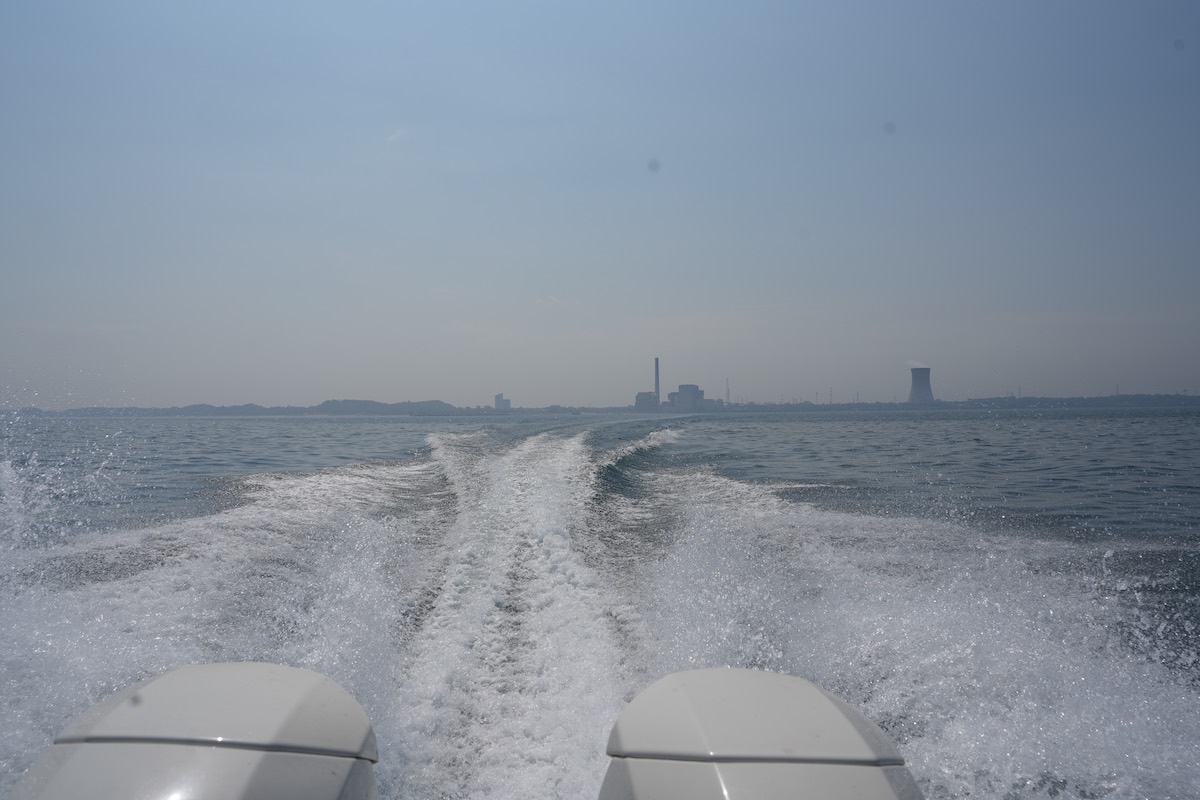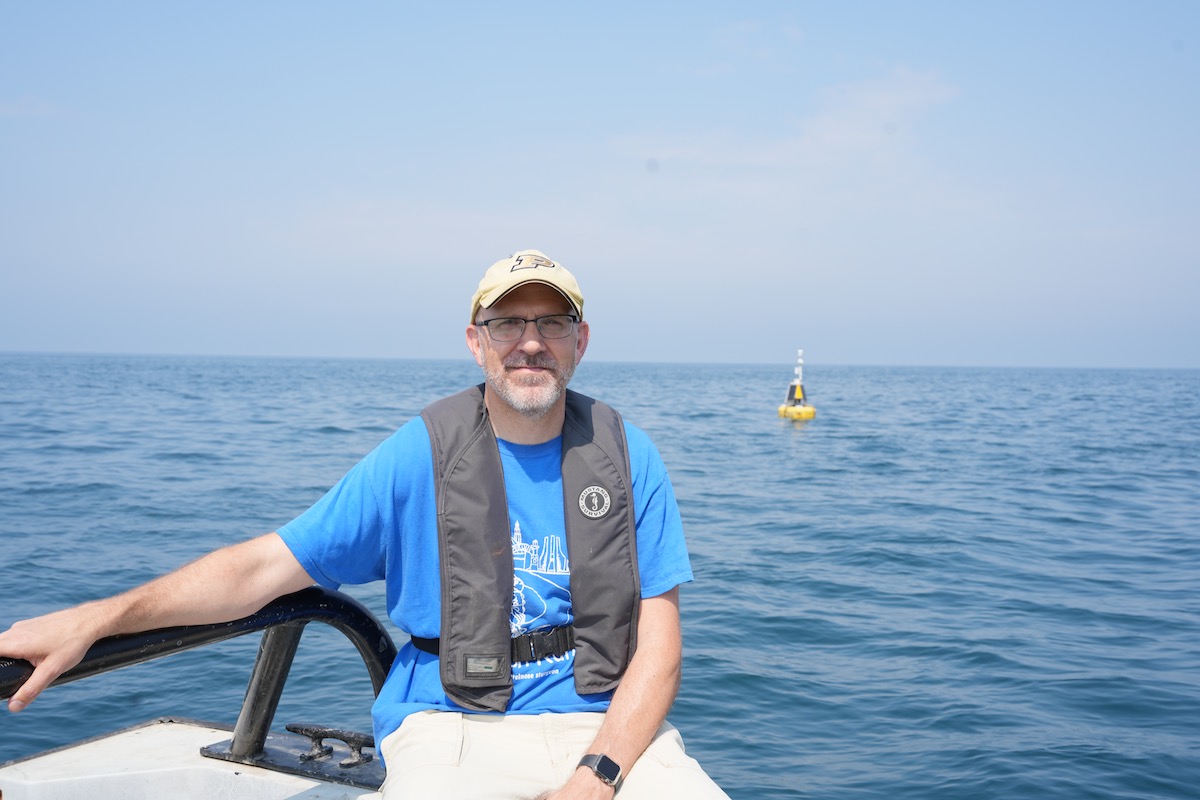Gearing up for a Great Lake day
Off the shores of Southern Lake Michigan, three yellow buoys bob up and down. Among ships and fishing boats, they might not draw much attention. But these aren’t just ordinary buoys.
The buoys, which belong to the Illinois-Indiana Sea Grant at Purdue University, including a Michigan City buoy co-managed by the Lyles School of Civil and Construction Engineering, collect data to support the Great Lakes region and its economy. As one of Indiana’s popular tourist destinations, Indiana Dunes draws all sorts of lake enthusiasts to its shores: families embarking on a beach day complete with swimming and sandcastles, sailors searching for adventure, boaters looking to relax on the waves and sport fishermen.
As important as they are for visitors’ recreation, the Great Lakes are critical for trade, agriculture, drinking water, energy, transport and more.
Tomas Höök, director of Illinois-Indiana Sea Grant and professor of Forestry and Natural Resources at Purdue University, knows that data collected from Lake Michigan supports both priorities.
 Höök approaches a buoy to check conditions of the sensors.
Höök approaches a buoy to check conditions of the sensors.  Data can be accessed in real-time from the buoy website.
Data can be accessed in real-time from the buoy website.
Illinois-Indiana Sea Grant conducts research along Lake Michigan and disseminates information through K-12, undergraduate and graduate educational programming.
“One of our main roles involves extension and outreach. We’re a bridge between researchers at the university and citizens, decision-makers, government agencies and non-profit organizations who may not have time to analyze technical research outputs but would benefit from findings,” said Höök. “We translate this information in a way that can be useful.”
Just as you should check the weather forecast before packing for a vacation, so should you check conditions on Lake Michigan before planning your lake day. Air and water temperature, wind speed and direction, wave height and solar radiation are reported on the program’s website, and a text and dial platform make it easy to check conditions from your phone. Knowing there are large waves may save a sailor from getting seasick, and understanding water temperatures can help fisherman target the best spots for a successful catch.
 Check conditions on Lake Michigan before heading out.
Check conditions on Lake Michigan before heading out. The Sea Grant’s buoys also monitor trends over time. Lake Michigan is warming, and data suggests large swings in water levels will continue in coming years.
“Near-record high water levels a few years ago were causing erosion along the shoreline, and there were even cases farther north in Lake Michigan of houses falling into the lake. But if you look back about 10 years, near-record low levels made the shoreline look like a mud flat,” Höök explained. “It’s important to understand because if infrastructure is built while the water is low, it’s highly likely the water level will rise back up and threaten that infrastructure.”
Just like the people he serves, Höök enjoys a day on the lake, too.
“I’m drawn to working on the Great Lakes because of how critical they are to the entire region. The data and science we collect is important, and like many others, I enjoy boating, swimming, fishing and just hanging around the lakes with family and friends.”







